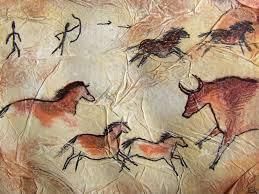|
The study of human evolution is called ___ and the scientists who study it are known as ___? |
Card: 1 / 28 |
|
Fossils, bones, cave paintings, tools, and utensils are used as evidence to understand human evolution. |
Card: 6 / 28 |
|
Riddle: I am a famous fossil discovered in 1974, over 3.2 million years old, and I helped shape our understanding of human ancestors. What am I? |
Card: 7 / 28 |
|
How did the tools and utensils used by early humans contribute to their survival? |
Card: 9 / 28 |
|
They allowed early humans to effectively hunt, gather food, and perform essential tasks such as cutting meat and preparing plant materials. |
Card: 10 / 28 |
|
Cave paintings provide insights into the animals early humans hunted and the social or cultural aspects of their lives. |
Card: 12 / 28 |
 Unlock all Flashcards with EduRev Infinity Plan Starting from @ ₹99 only
|
|
True or False: The common ancestor of humans and apes lived in Europe approximately 6 million years ago. |
Card: 15 / 28 |
|
What adaptations did Homo sapiens develop that differentiated them from earlier human species? |
Card: 17 / 28 |
|
Homo sapiens developed smaller teeth, a more defined chin, rounded skulls, and larger brains compared to earlier species. |
Card: 18 / 28 |
|
Fill in the blank: The study of fossils is called ___ and is essential for understanding human evolution. |
Card: 19 / 28 |
|
Early humans were hunters and gatherers, using sharpened stones and rudimentary tools made from stone, wood, and bone for hunting and gathering. |
Card: 22 / 28 |
|
Riddle: I am a term used for those who move from place to place, never settling permanently. Who am I? |
Card: 23 / 28 |
|
Charles Darwin was an English naturalist known for his work on the theory of evolution. He believed all species in the world evolved over millions of years from a common ancestor. |
Card: 26 / 28 |
|
Fill in the blank: Early humans did not wear ___ and often lived in treetops or caves. |
Card: 27 / 28 |










 Nomads
Nomads















